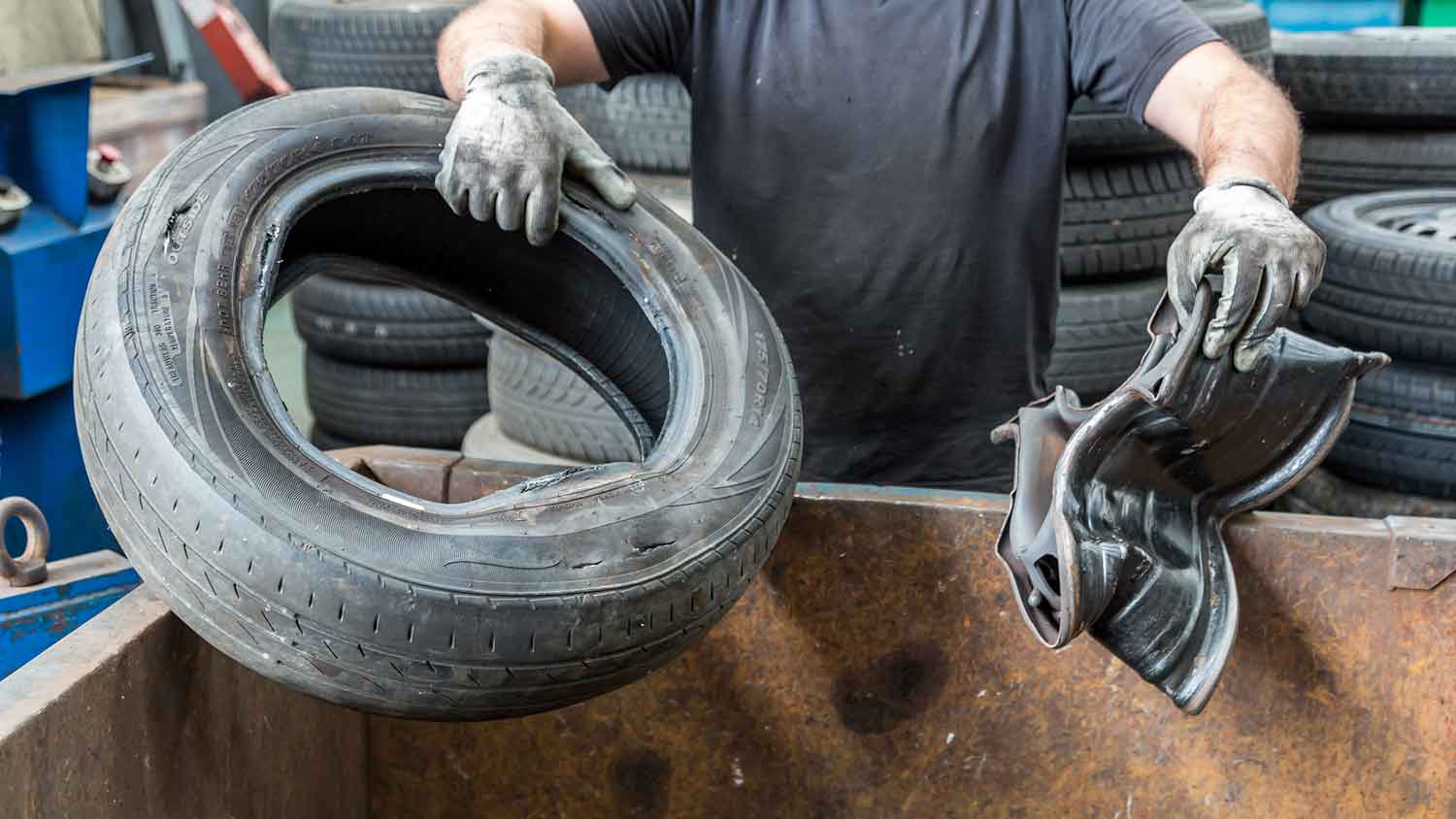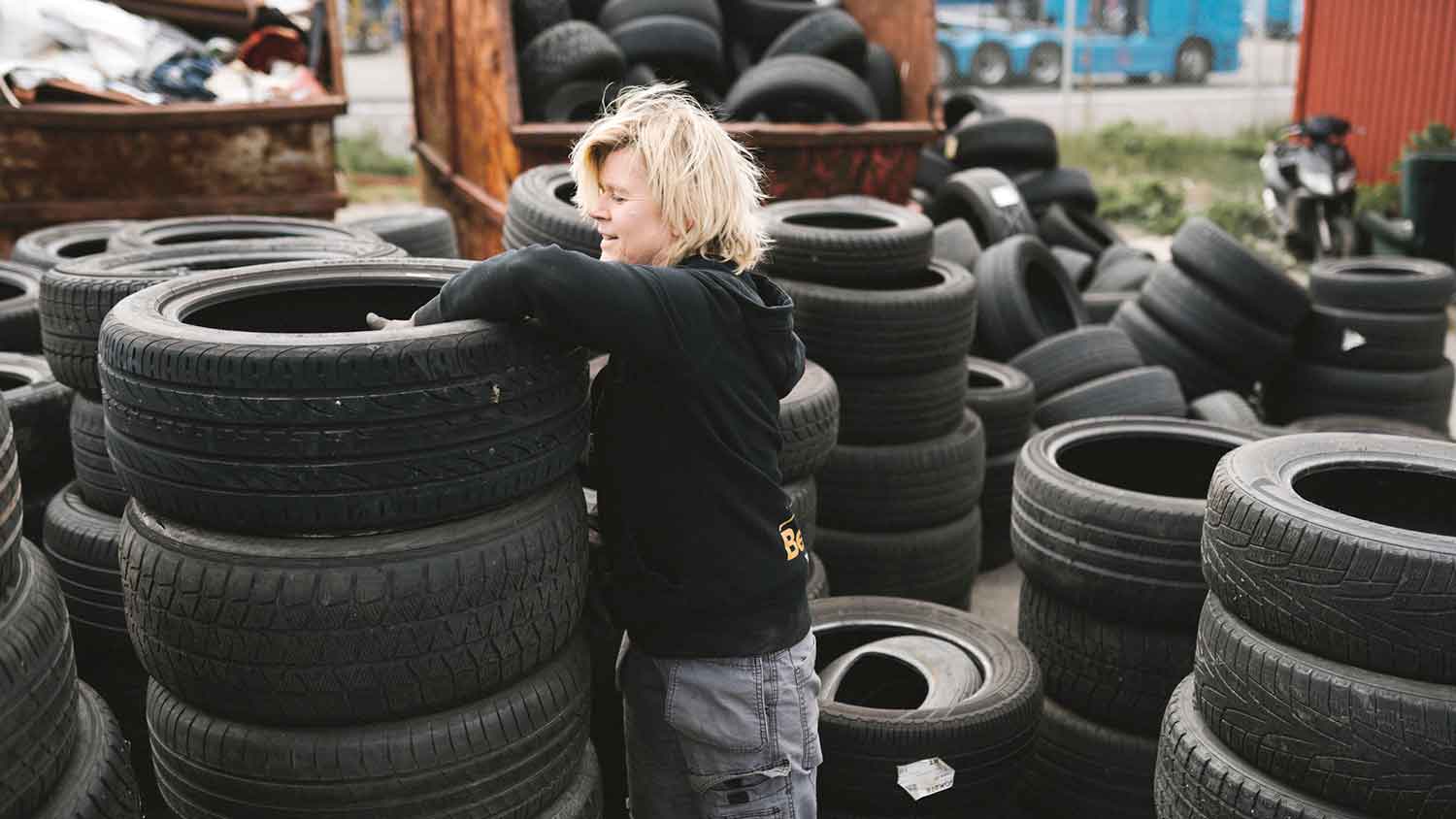
Appliance removal costs can vary widely. Learn the average cost of appliance removal and the factors that affect how much you pay.
Tossing old tires isn’t as simple as throwing them in the trash


When you need to get rid of old tires, typical waste disposal methods won’t always work. Tires contain various toxic substances, so they can be harmful to the environment and your health. This also means they don’t make the best reusable item, despite what many DIY guides would have you believe. Learn how to dispose of old tires properly to avoid potential safety hazards.
Proper tire disposal prevents health, environmental, and safety problems. Scrap tires can become homes for mosquitoes, snakes, and other pests. This creates dangerous situations in yards and other spaces where these pests can bite or sting you and your family. Mosquitos, especially, are a problem due to their ability to transmit disease.
Even when tires are buried or filled with soil and used as planters, they pose an environmental risk. According to NC State University, tires contain various chemicals that leach out as they break down. These chemicals contaminate soil, damage plants, and pollute waterways. They can also be absorbed through your skin and may pose health risks for you and your family.
Tire disposal fees vary by state. Some states require a fee of $0.25 to $10 per tire whenever disposing of a tire, whether through your regular waste management service or at a tire retailer. Some states also mandate that retailers charge a similar fixed fee, while certain retailers charge their own fee to cover transportation and other costs.

To dispose of old tires, first understand the legally permitted options in your state and local area. You can then cut and dispose of the tire yourself or take it to a facility that can accept tires for safe disposal or recycling.
Some regular waste management providers will accept tires as long as they are properly cut with a utility knife, box cutter, or saw. Contact your provider and confirm that tires are allowed. If your provider is legally permitted to accept tires, they’ll likely advise you to remove excess soil and cut the tire in one of two ways:
Cut out the sidewalls so you're left with three pieces: a center tread and two sidewalls.
Cut the tire like a bagel through the middle of the center tread, so you have two halves.
Some tire dealers accept used tires. These businesses are equipped to safely dispose of or recycle tires. You may get a credit toward a new tire purchase, but you also may be subject to a small fee of up to $10 per tire. This method is ideal if you need new tires or if you have large-sized tires that your waste disposal provider can't accept.
You can call a junk removal company or a dedicated scrap tire hauler to pick up and dispose of your old tires. This method is ideal if you have a large number of scrap tires to dispose of.

Certain landfills and similar facilities are permitted to accept scrap tires. Look online for local tire disposal sites or tire recycling centers in your state.
There are several tire disposal methods you should not use, as they can lead to environmental damage, safety hazards, and legal penalties.
Regular trash: Don’t put old tires in the trash unless they’re properly broken down.
Regular recycling: Most recycling services aren’t equipped to handle old tires.
Landscaping and yard use: Tires leach unnatural chemicals and heavy metals into the soil wherever they are left or buried, which can cause health problems after exposure.
Burning: Never burn tires. This pollutes the air and water and is illegal in some states.
Water: Don’t dump tires in bodies of water. This pollutes the water as they break down.
Most old tire disposal methods don’t require you to hire a pro. However, if you have a large number of items for disposal that include old tires, you may choose to hire a local junk removal service. Junk removal costs anywhere from $60 to $700, depending on the size of your haul. You can also pay the cost to rent a dumpster, which normally ranges from $300 to $500.
From average costs to expert advice, get all the answers you need to get your job done.

Appliance removal costs can vary widely. Learn the average cost of appliance removal and the factors that affect how much you pay.

Junk removal costs depend on the volume and type of waste you need removed, but paying a professional saves you time and energy over hauling it yourself.

Furniture removal costs depend on the type, size, and location of items. Learn the average cost of furniture removal to free up room in your home.

Ensure your old mattress is disposed of legally and responsibly by hiring a junk removal service.

Old washers and dryers can be difficult to dispose of. Learn how to dispose of a washer and dryer with as little hassle as possible.

If you need to get rid of an old toilet, you have options. Learn how to dispose of a toilet properly.